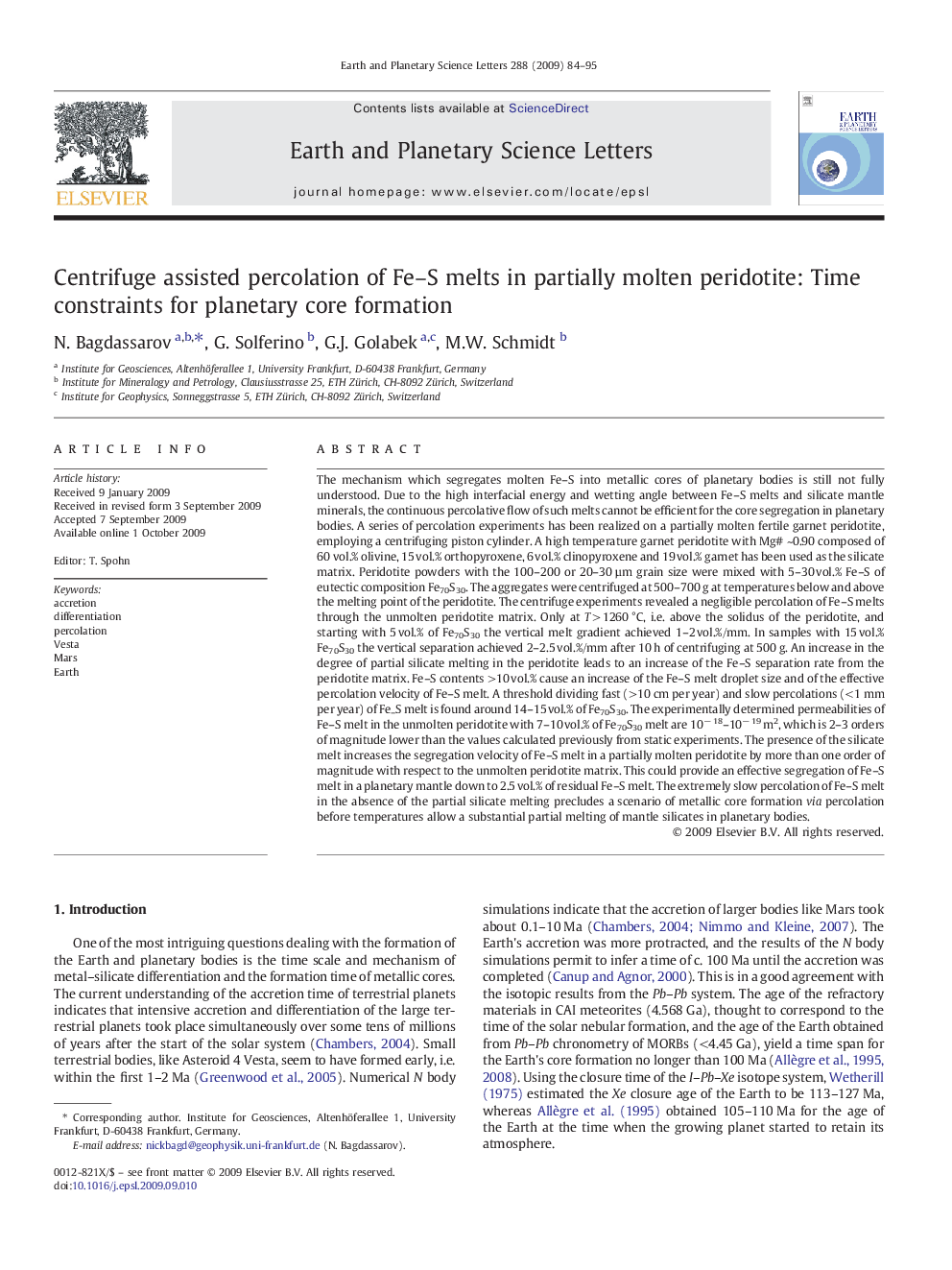| کد مقاله | کد نشریه | سال انتشار | مقاله انگلیسی | نسخه تمام متن |
|---|---|---|---|---|
| 4678950 | 1634863 | 2009 | 12 صفحه PDF | دانلود رایگان |

The mechanism which segregates molten Fe–S into metallic cores of planetary bodies is still not fully understood. Due to the high interfacial energy and wetting angle between Fe–S melts and silicate mantle minerals, the continuous percolative flow of such melts cannot be efficient for the core segregation in planetary bodies. A series of percolation experiments has been realized on a partially molten fertile garnet peridotite, employing a centrifuging piston cylinder. A high temperature garnet peridotite with Mg# ~0.90 composed of 60 vol.% olivine, 15 vol.% orthopyroxene, 6 vol.% clinopyroxene and 19 vol.% garnet has been used as the silicate matrix. Peridotite powders with the 100–200 or 20–30 µm grain size were mixed with 5–30 vol.% Fe–S of eutectic composition Fe70S30. The aggregates were centrifuged at 500–700 g at temperatures below and above the melting point of the peridotite. The centrifuge experiments revealed a negligible percolation of Fe–S melts through the unmolten peridotite matrix. Only at T > 1260 °C, i.e. above the solidus of the peridotite, and starting with 5 vol.% of Fe70S30 the vertical melt gradient achieved 1–2 vol.%/mm. In samples with 15 vol.% Fe70S30 the vertical separation achieved 2–2.5 vol.%/mm after 10 h of centrifuging at 500 g. An increase in the degree of partial silicate melting in the peridotite leads to an increase of the Fe–S separation rate from the peridotite matrix. Fe–S contents >10 vol.% cause an increase of the Fe–S melt droplet size and of the effective percolation velocity of Fe–S melt. A threshold dividing fast (>10 cm per year) and slow percolations (<1 mm per year) of Fe–S melt is found around 14–15 vol.% of Fe70S30. The experimentally determined permeabilities of Fe–S melt in the unmolten peridotite with 7–10 vol.% of Fe70S30 melt are 10− 18–10− 19 m2, which is 2–3 orders of magnitude lower than the values calculated previously from static experiments. The presence of the silicate melt increases the segregation velocity of Fe–S melt in a partially molten peridotite by more than one order of magnitude with respect to the unmolten peridotite matrix. This could provide an effective segregation of Fe–S melt in a planetary mantle down to 2.5 vol.% of residual Fe–S melt. The extremely slow percolation of Fe–S melt in the absence of the partial silicate melting precludes a scenario of metallic core formation via percolation before temperatures allow a substantial partial melting of mantle silicates in planetary bodies.
Journal: Earth and Planetary Science Letters - Volume 288, Issues 1–2, 30 October 2009, Pages 84–95